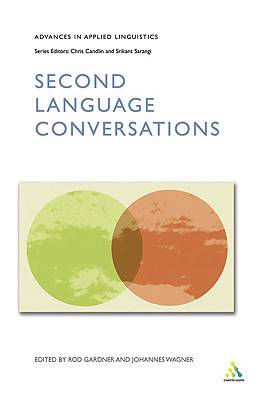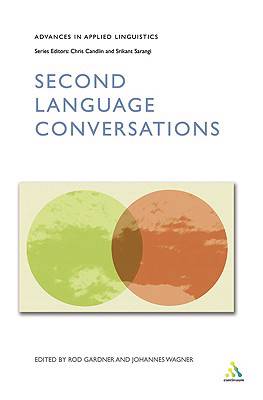
Je cadeautjes zeker op tijd in huis hebben voor de feestdagen? Kom langs in onze winkels en vind het perfecte geschenk!
- Afhalen na 1 uur in een winkel met voorraad
- Gratis thuislevering in België vanaf € 30
- Ruim aanbod met 7 miljoen producten
Je cadeautjes zeker op tijd in huis hebben voor de feestdagen? Kom langs in onze winkels en vind het perfecte geschenk!
- Afhalen na 1 uur in een winkel met voorraad
- Gratis thuislevering in België vanaf € 30
- Ruim aanbod met 7 miljoen producten
Zoeken
€ 186,95
+ 373 punten
Omschrijving
"This collection is the first to consistently adopt Conversation Analysis as an approach to second language interaction. By examining first and second language speakers' participation in a wide range of activities, it challenges the dominant view of 'nonnative speakers' as deficient communicators. Proposing instead to understand second language users' conversational participation as interactional achievement, the book makes a powerful case for 'ethnomethodological respecification' in second language research."
Professor Gabriele Kasper, University of Hawai'i
Conversations involving speakers whose first language is not the language in which they are talking have become widespread in the globalized world. Migration, increased travel for business or pleasure, as well as communication through new technologies such as the internet make Second Language Conversations an increasingly common everyday event.
In this book Conversation Analysis is used to explore natural, casual talk between speakers in a second language. The contributors shift emphasis away from controlled contexts such as the classroom towards more sociable environments in which people go about their daily routines. English, German, French, Japanese, Finnish and Danish are all analyzed as second languages within a variety of professional, educational and sociable situations.
This collection of essays aims to present naturally occurring Second Language Conversations in order to show what speakers in these situations do; how they utilize first language conversational practices, and whether or not grammar, vocabulary and pronunciation help or hinder the construction of meaning.
Professor Gabriele Kasper, University of Hawai'i
Conversations involving speakers whose first language is not the language in which they are talking have become widespread in the globalized world. Migration, increased travel for business or pleasure, as well as communication through new technologies such as the internet make Second Language Conversations an increasingly common everyday event.
In this book Conversation Analysis is used to explore natural, casual talk between speakers in a second language. The contributors shift emphasis away from controlled contexts such as the classroom towards more sociable environments in which people go about their daily routines. English, German, French, Japanese, Finnish and Danish are all analyzed as second languages within a variety of professional, educational and sociable situations.
This collection of essays aims to present naturally occurring Second Language Conversations in order to show what speakers in these situations do; how they utilize first language conversational practices, and whether or not grammar, vocabulary and pronunciation help or hinder the construction of meaning.
Specificaties
Betrokkenen
- Auteur(s):
- Uitgeverij:
Inhoud
- Aantal bladzijden:
- 304
- Taal:
- Engels
- Reeks:
Eigenschappen
- Productcode (EAN):
- 9780826488008
- Verschijningsdatum:
- 7/12/2005
- Uitvoering:
- Paperback
- Formaat:
- Trade paperback (VS)
- Afmetingen:
- 160 mm x 235 mm
- Gewicht:
- 476 g

Alleen bij Standaard Boekhandel
+ 373 punten op je klantenkaart van Standaard Boekhandel
Beoordelingen
We publiceren alleen reviews die voldoen aan de voorwaarden voor reviews. Bekijk onze voorwaarden voor reviews.









